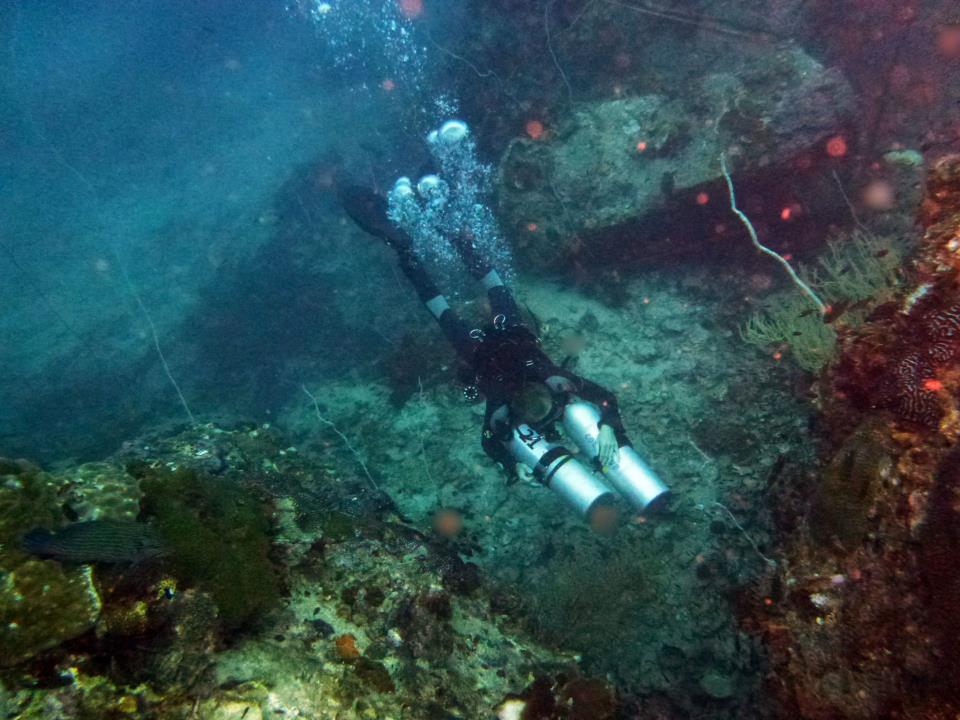Something that we see that is becoming more and more popular is diving sidemount. This means positioning your tanks on your side, instead of your back. Now a lot of people want to dive sidemount because it is the new thing to do, There are many benefits to diving sidemount, first of all it is very comfortable, especially on your back. When diving sidemount you have nothing on your back except a small bladder for buoyancy control. There is no steel or aluminium backplate.
It is also much easier to get great trim. Another advantage is if you are cave diving in remote locations because it is far easier to carry 2 tanks than one twinset. But the best thing about sidemount is that you are so streamlined compared to back mount. You can even unclip the tanks to put them in front of you giving you a much smaller profile and allowing you to fit through some very very small gaps. Great when exploring caves and wrecks!
Now it is not without it’s drawbacks. The biggest of all is that it is harder to manage your gas. There is no manifold connecting the 2 tanks so you have to keep an eye on the pressure and not accidentally breath too much from one. Otherwise you will end up floating on one side and sinking on the other! So to compensate for this you need to switch between regulators every few minutes to keep the gas levels at the same. Also the wings usually only hold a small amount of air so you need to make sure you can float with full tanks and a full wing.
Diving sidemount is an interesting change for many serious divers as it gives you something new to try. If you are interested in cave and wreck diving it can grant you access to those places you couldn’t reach before.


